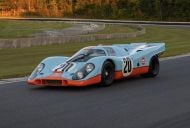Aston Martin is planning to introduce more than 10 cars before the end of 2023, including more DBX variants and more electrified models.
It’s part of a goal to expand the brand’s portfolio and become a “self-sustaining company”, albeit still with close ties to Mercedes-AMG, by 2024 or 2025.
Autocar spoke to Aston Martin CEO Tobias Moers, who confirmed the company is also focusing more on electrification, and is planning a series of plug-in hybrid and all-electric models across all its segments and body styles.
The recently introduced DBX will soon be bookended by a new base model and a new range-topper.
The entry-level DBX, set to debut in September, will reportedly be powered by a mild-hybrid inline six-cylinder engine.
The range-topper will feature a more powerful V8 engine and go head-to-head with the Lamborghini Urus.
Aston Martin hasn’t forgotten about its existing models either, with facelifts planned for the DB11, Vantage and DBS Superleggera which Moers told Autocar were “overaged”.
All three models will be updated within the next 18 months, adding new infotainment and “so many other new things”.
The Vantage and DB11 line-ups will also be expanded, though Moers didn’t share any details on what new variants are incoming.
The mid-engined Aston Martin Vanquish and Valhalla have officially entered the development stage.
Aston’s new mid-engined supercars were originally intended to use a bespoke V6 engine, however plans for this engine have been scrapped.
“I found a concept engine that wasn’t Euro 7- capable. It would have taken another huge investment that was really too big to bring to life,” said Moers.
“Both will now look different but cool still and better.”
Instead, they’ll be powered by hybrid drivetrains sourced from Mercedes-AMG, with which Aston Martin retains close ties.
Before they arrive, the Valkyrie hypercar is due in the second half of 2021, with a convertible variant expected to follow next year.
As reported previously, Mr Moers – who went from being the boss of Mercedes-AMG to the boss of Aston Martin in 2020 – has already been making changes.
That includes scrapping plans for Lagonda to be resurrected as an all-electric rival brand for Rolls-Royce.
“We shouldn’t put money into that. We should instead put money into electrification, batteries and the expansion of our portfolio,” said Mr Moers, who said resurrecting Lagonda as a standalone brand would dilute the Aston Martin brand.
Instead, he confirmed reports the Lagonda nameplate would be dusted off for exclusive, more luxurious versions of existing Aston products – think Mercedes-Maybach’s relation to Mercedes-Benz.
That leaves a production version of the dramatic 2019 Lagonda All-Terrain concept on the cutting room floor.
The production crossover was set to start production in 2022 at the St Athan, Wales plant where the DBX is built.
Moers said in addition to focusing on an expansion of the Aston Martin line-up, the company is also pushing towards improving the quality and performance of its models while still making “more room for luxury”.










